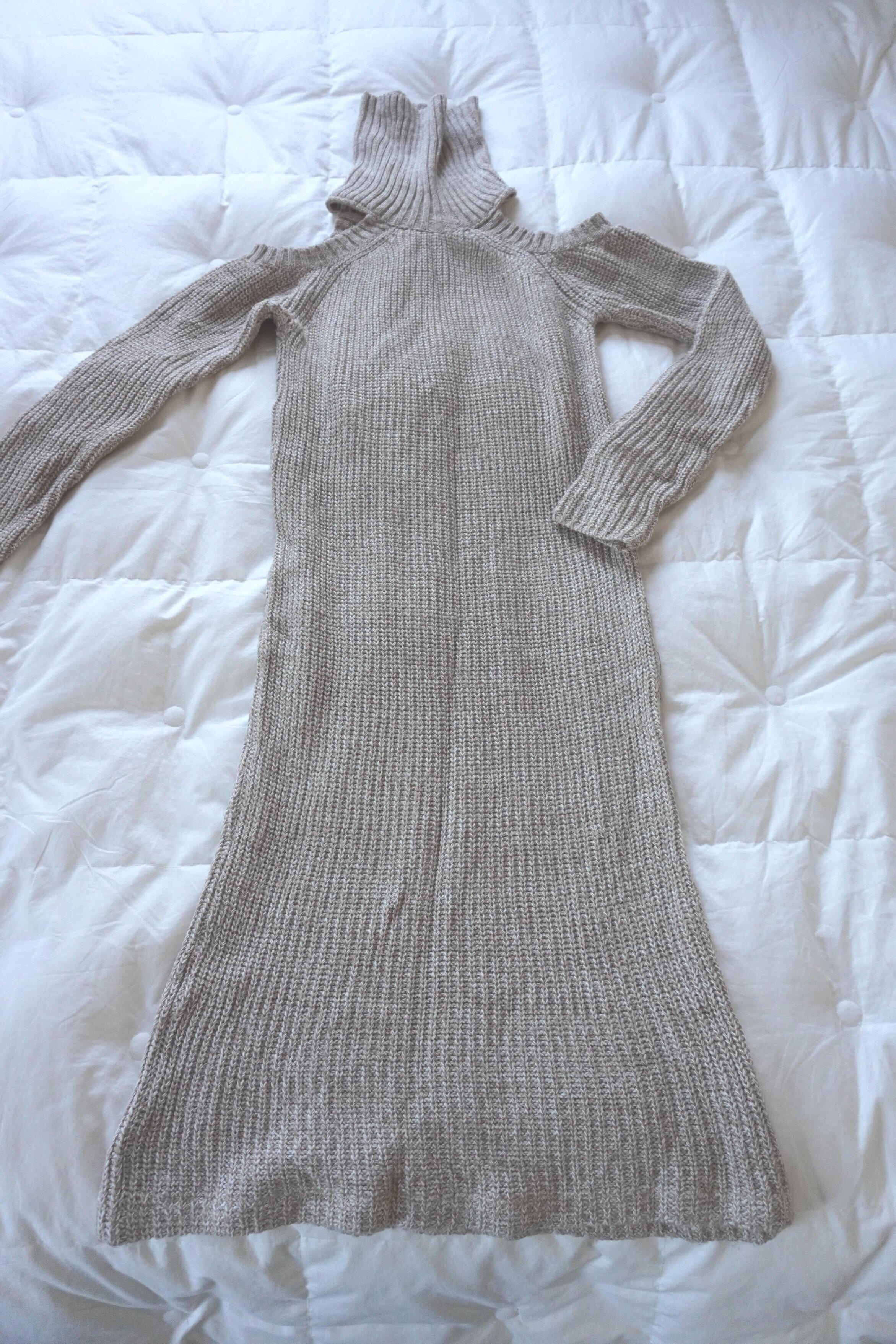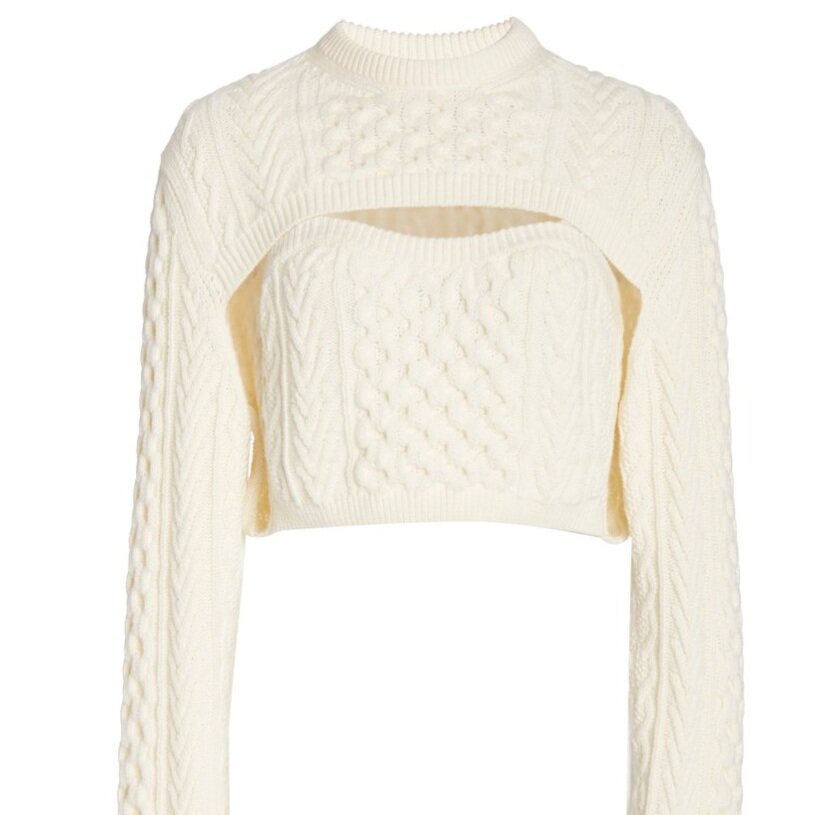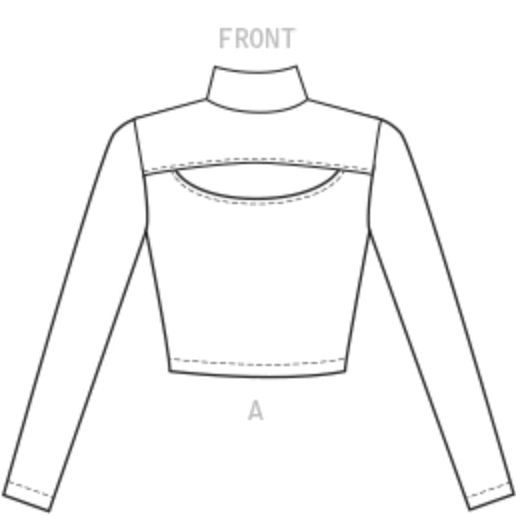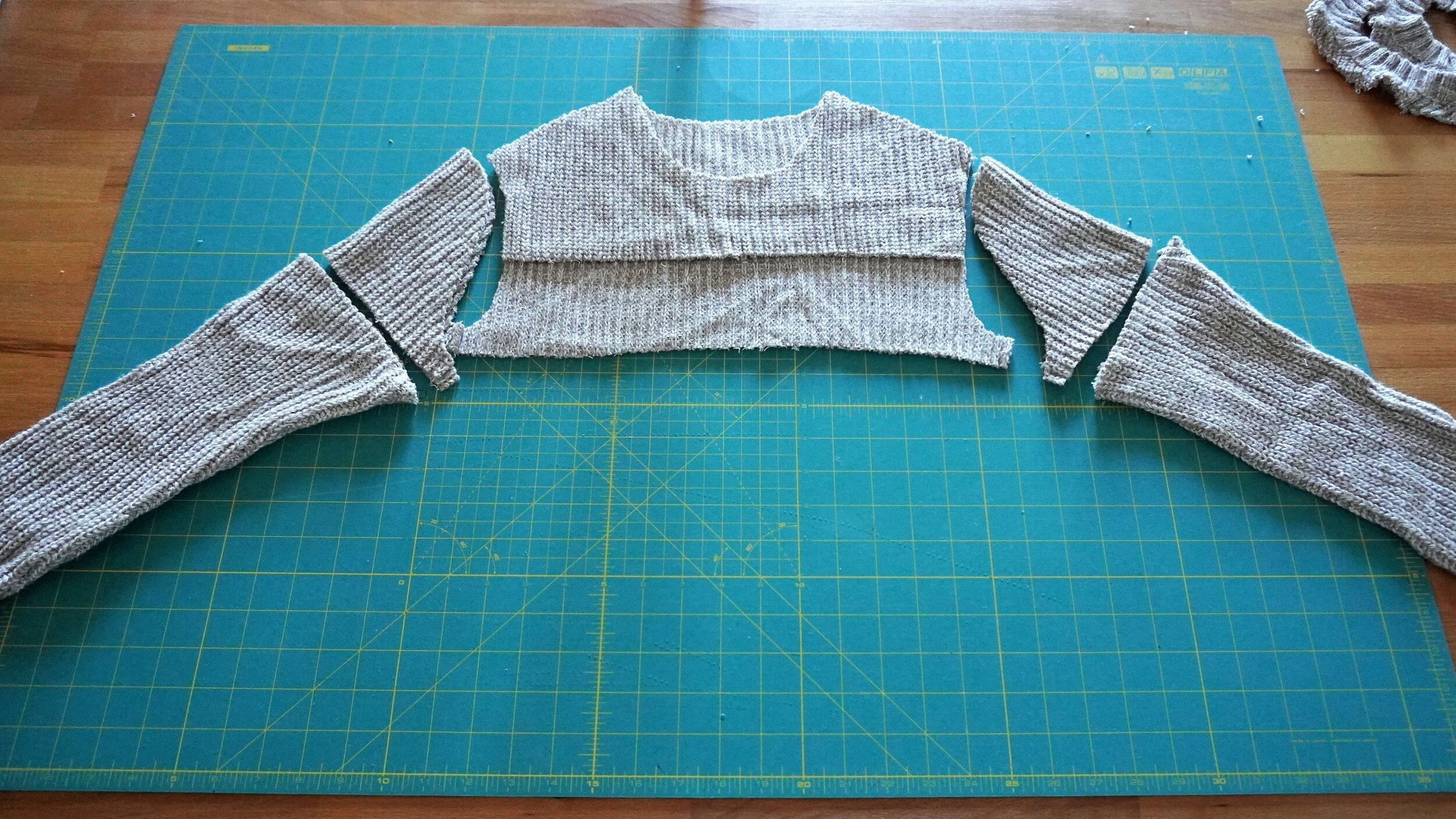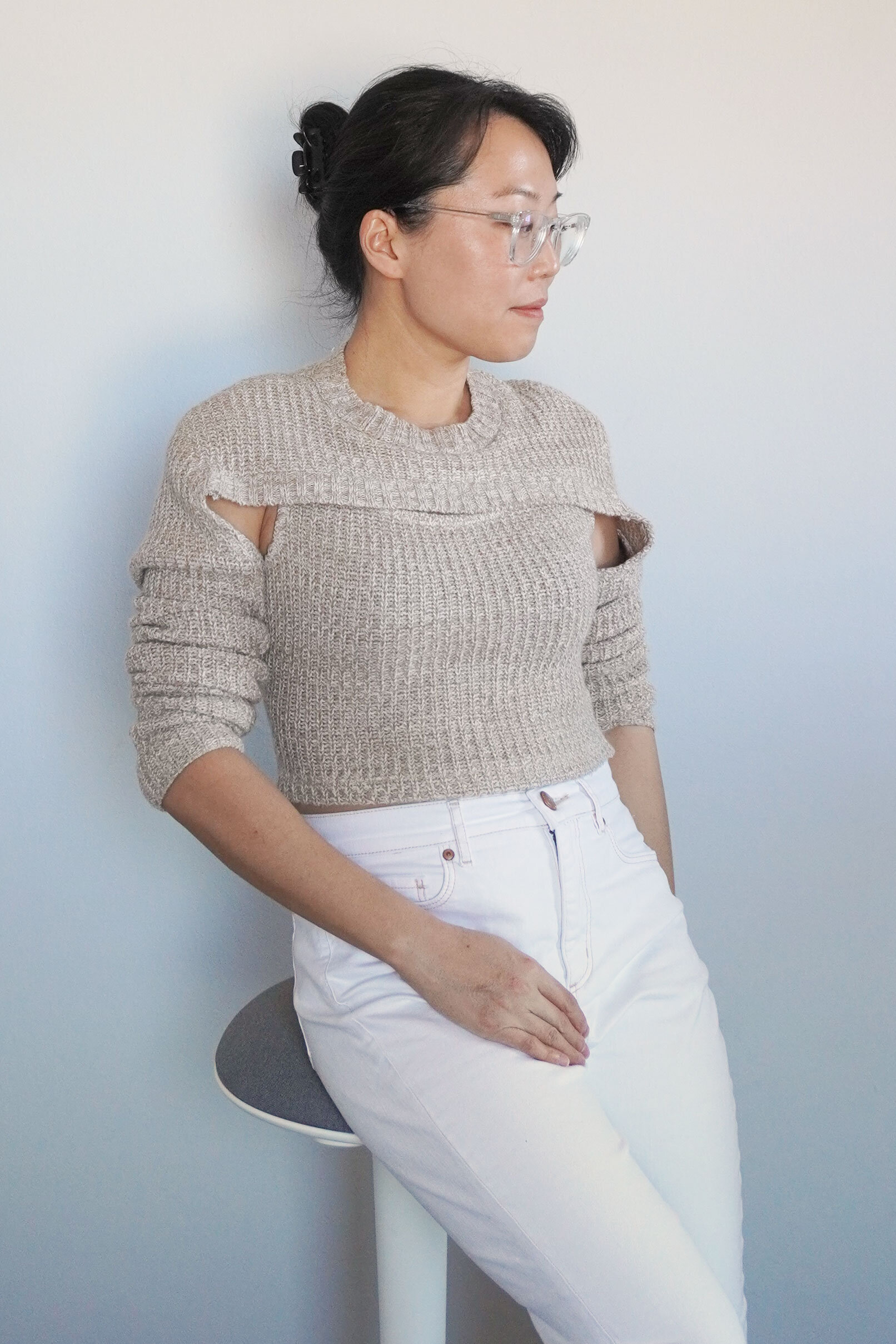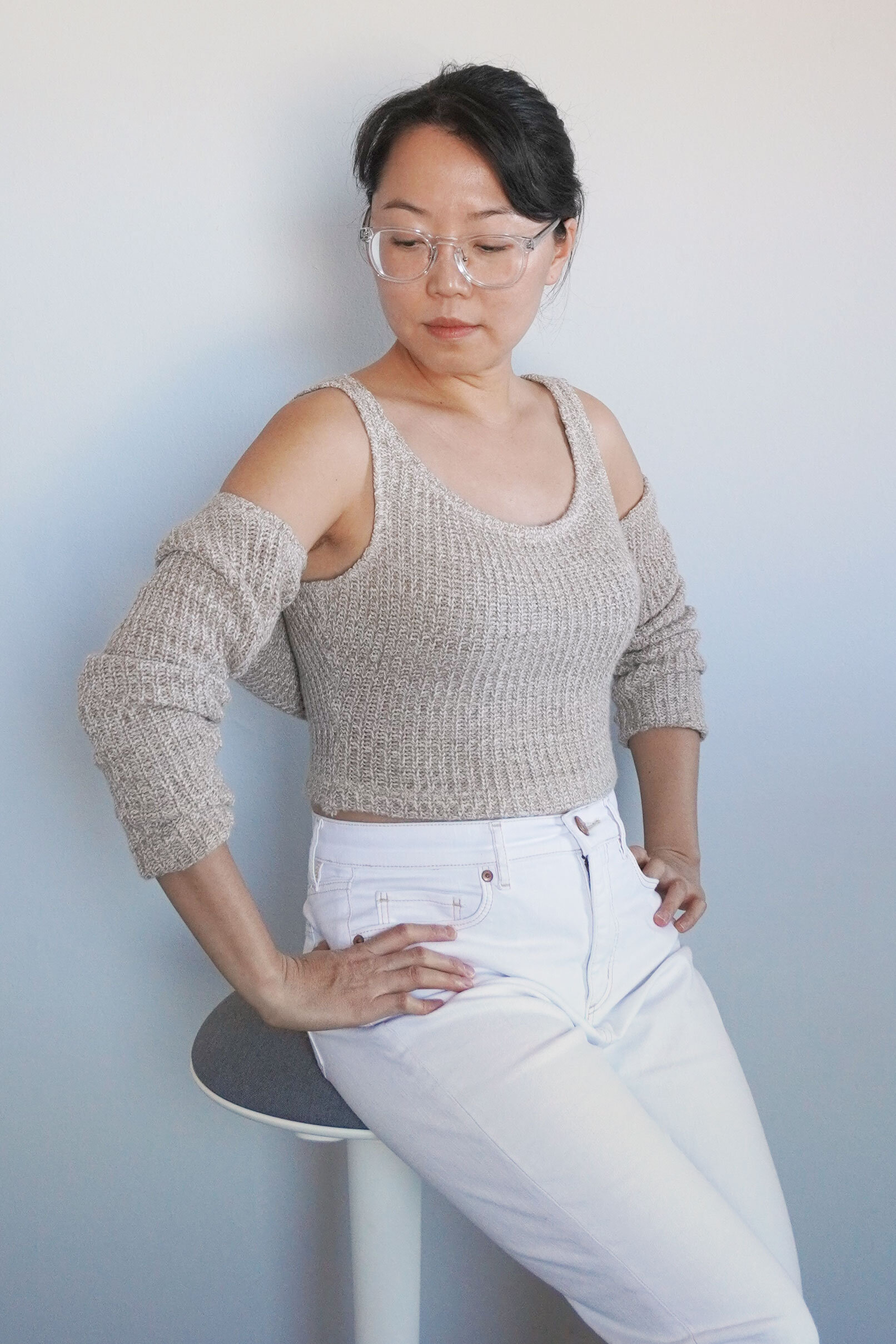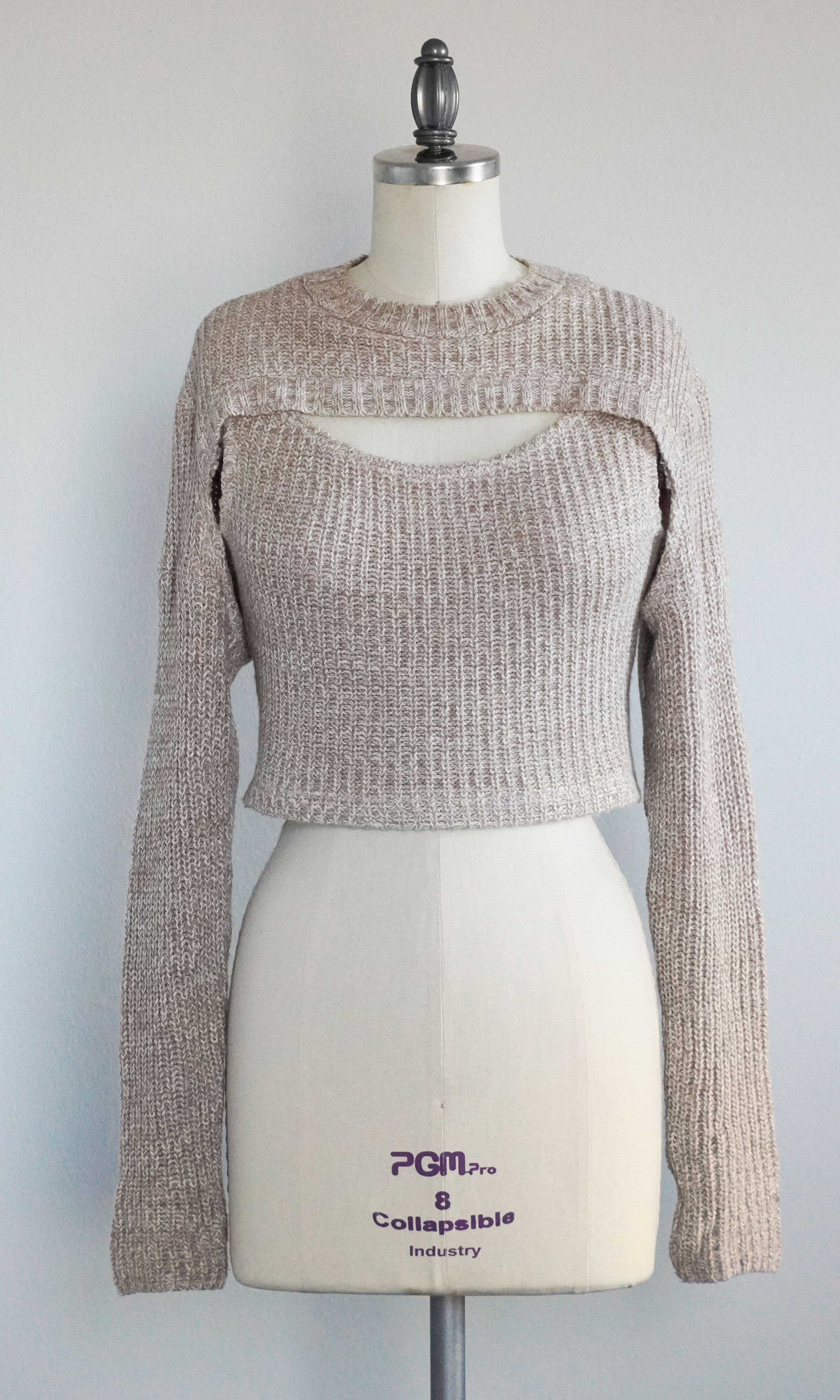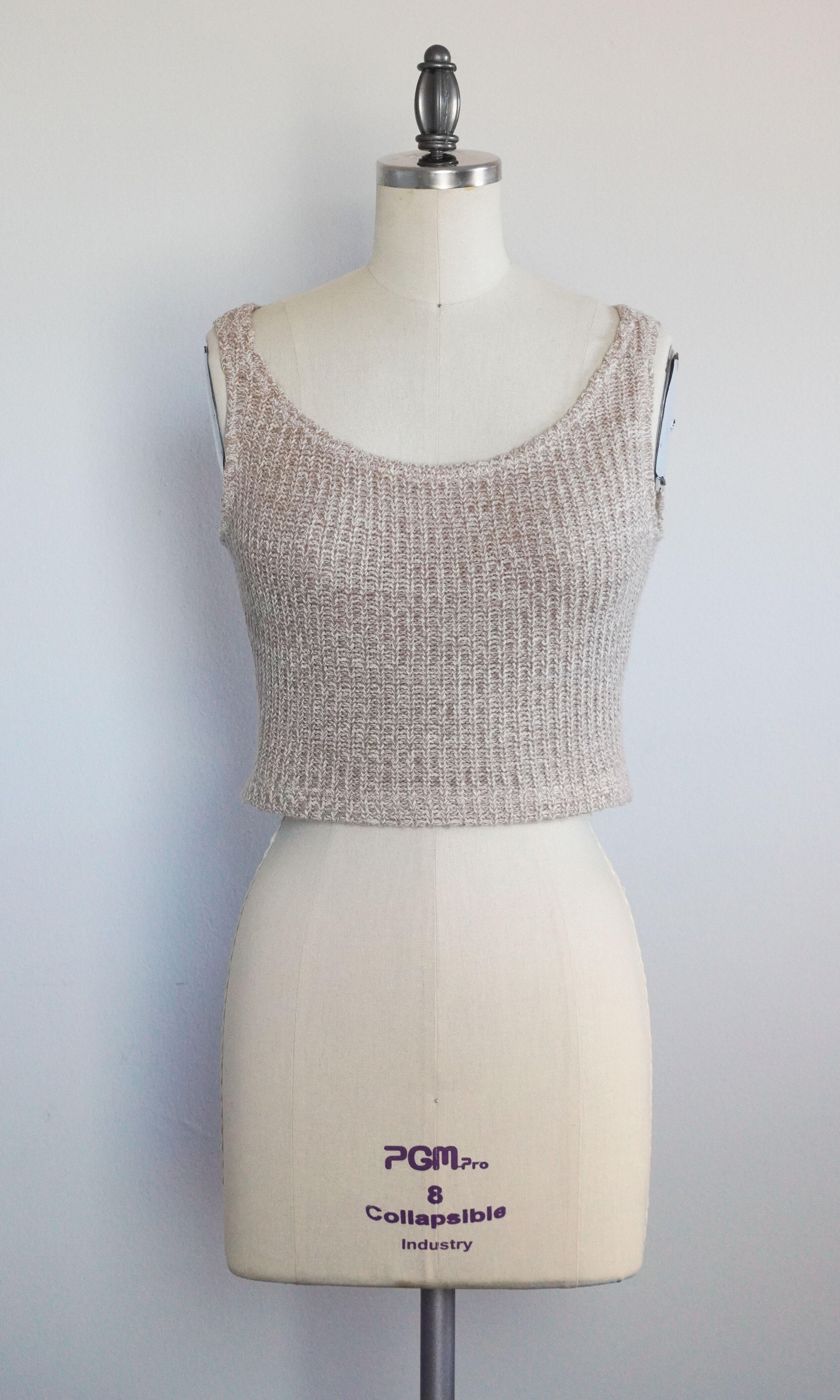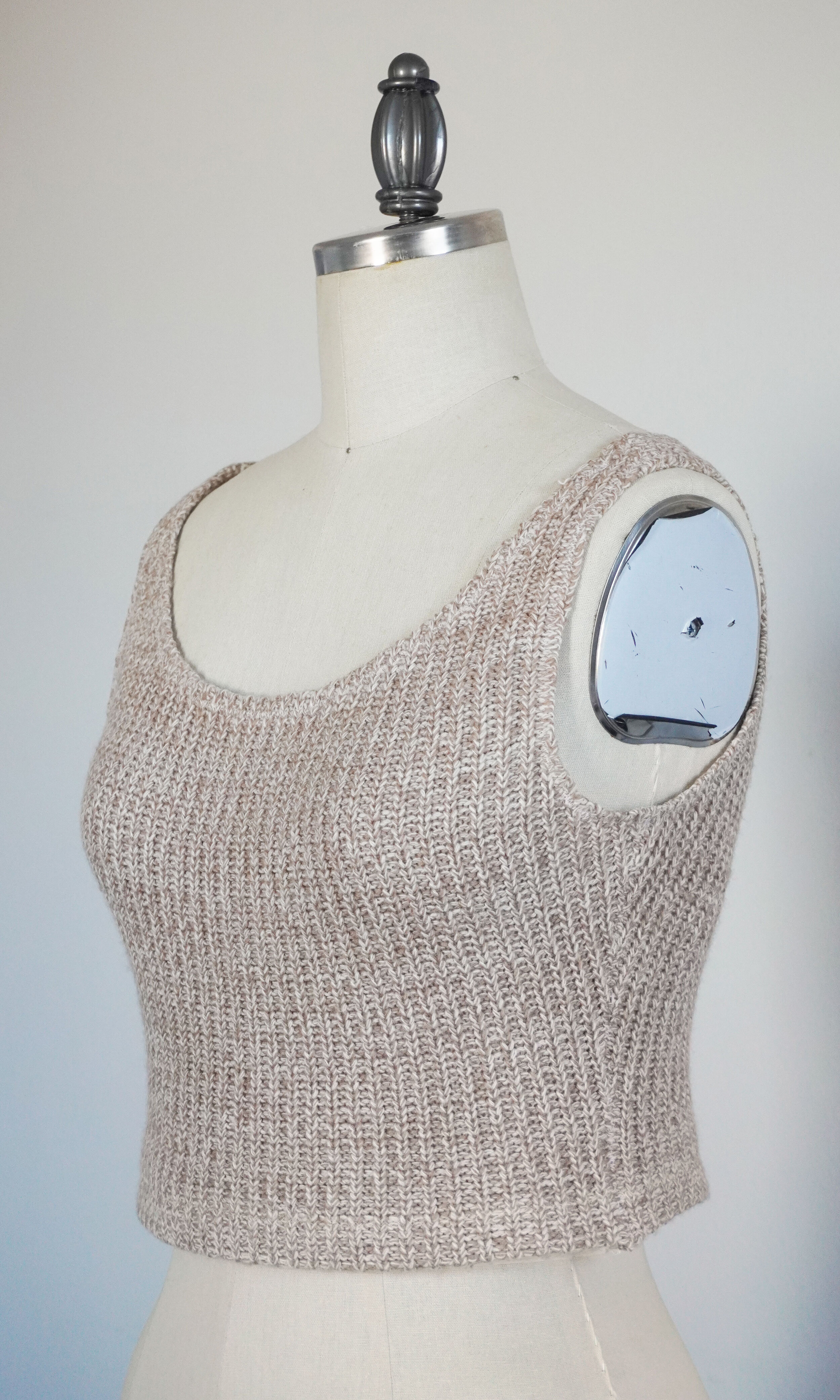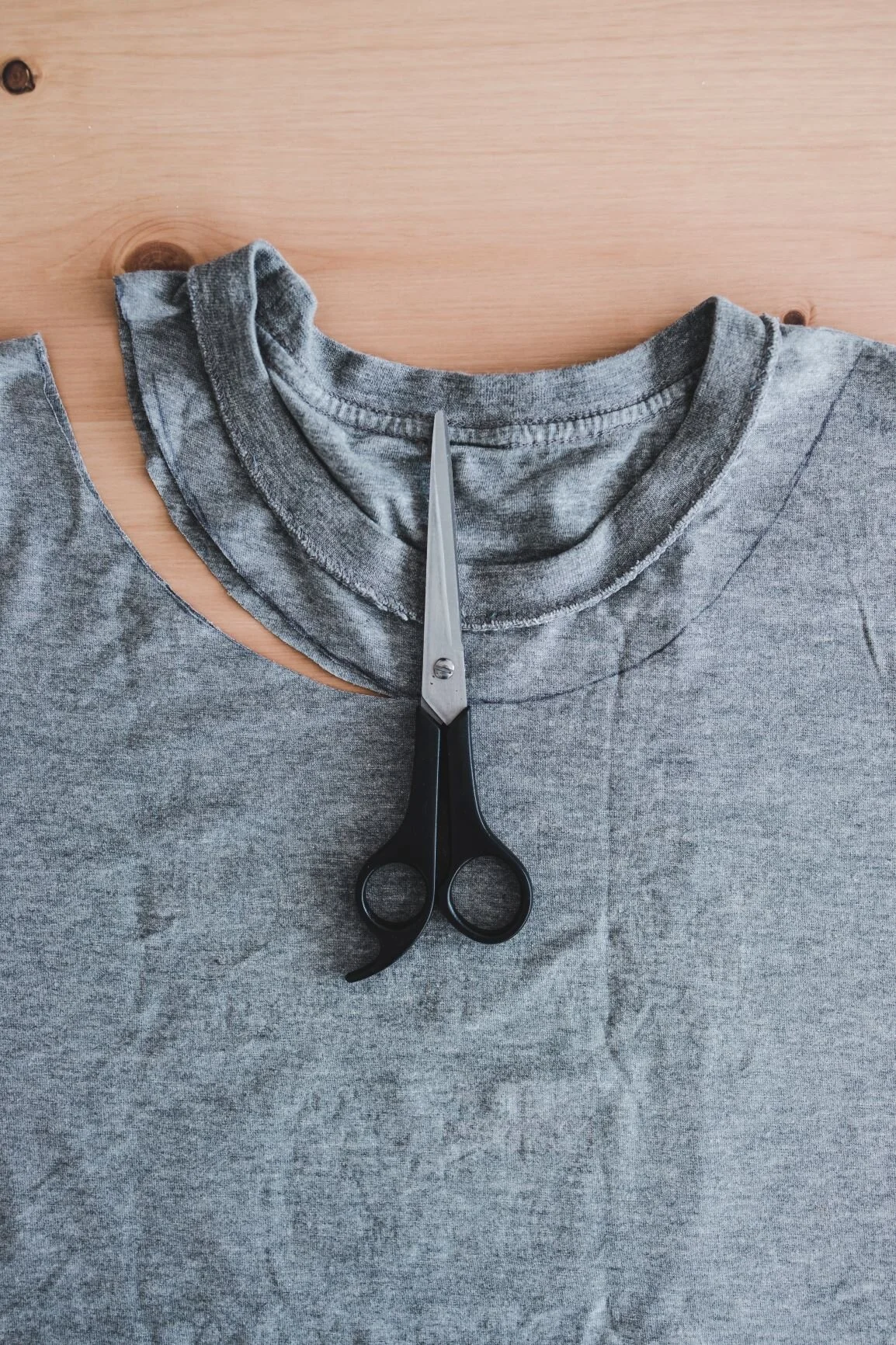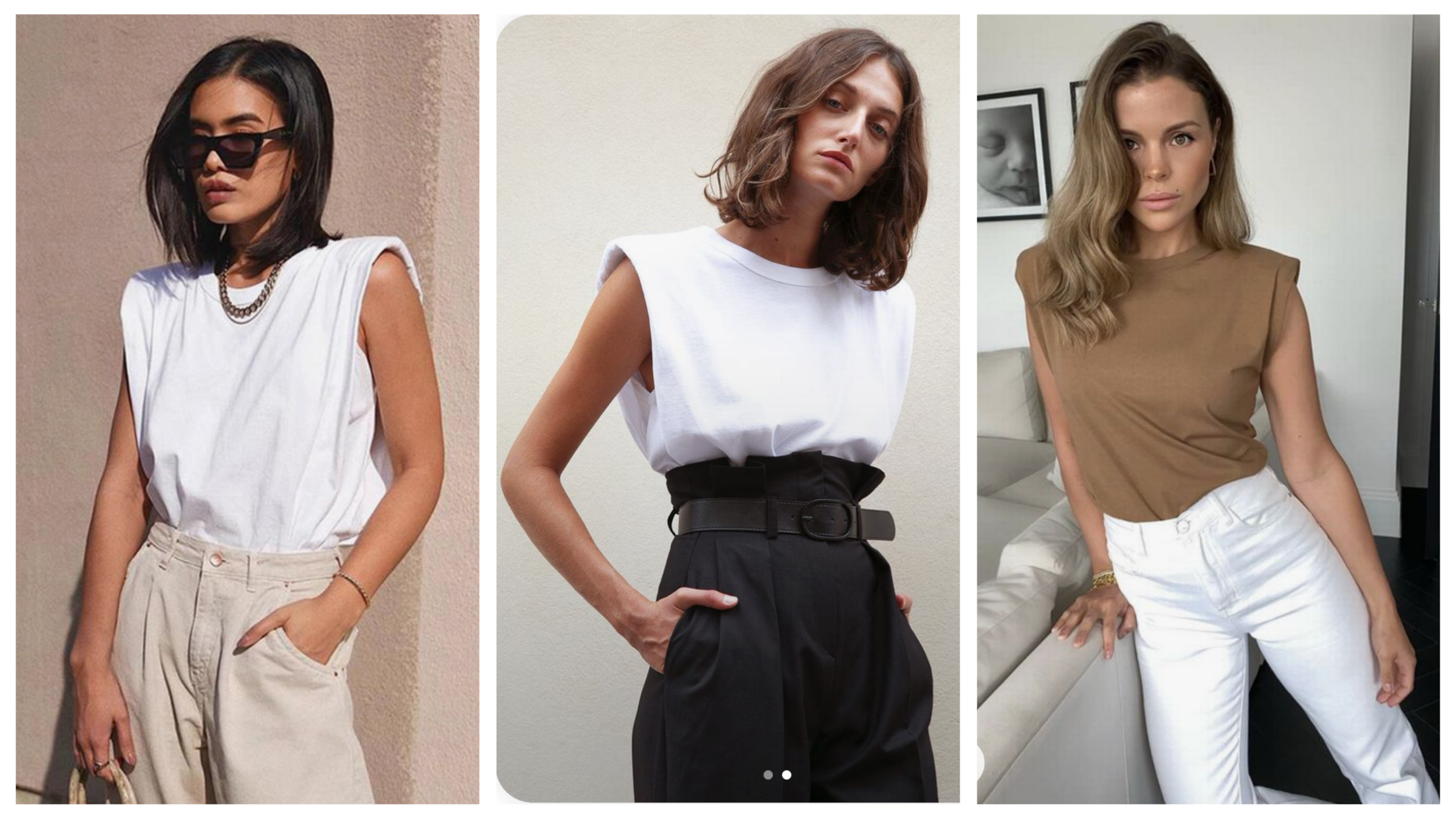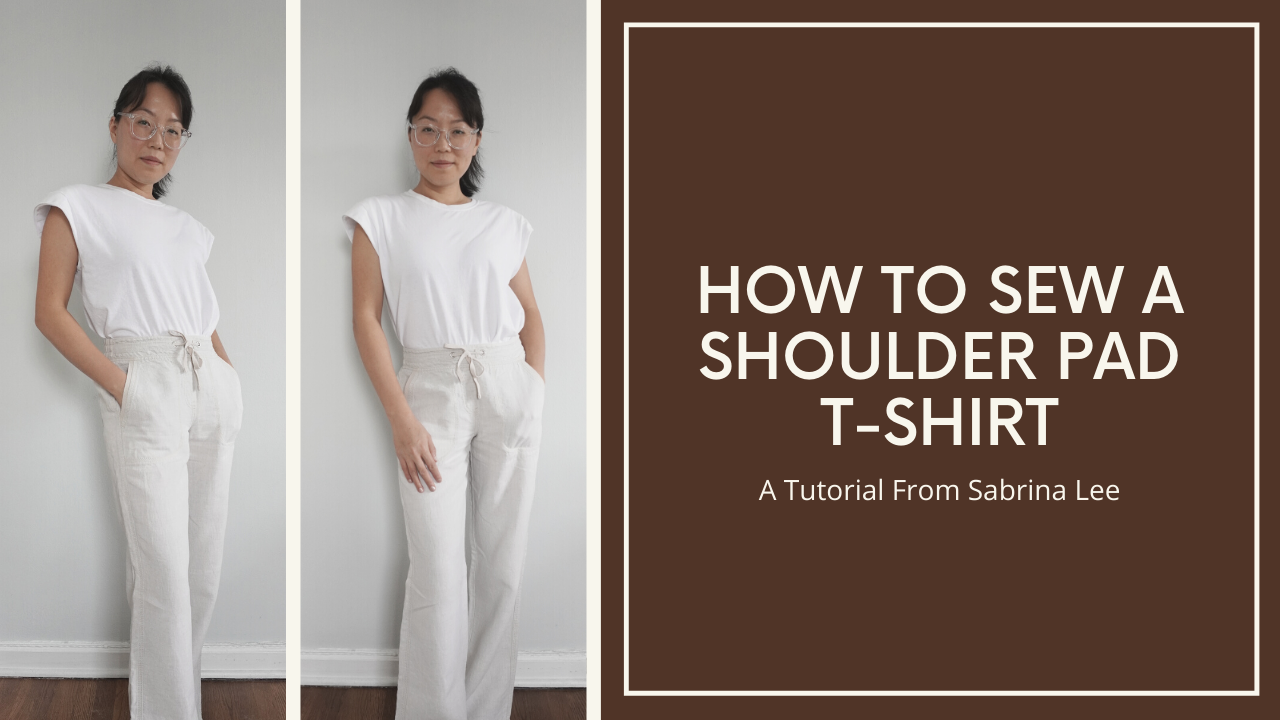You can turn a vintage wool blanket into a fabulous wool winter coat, using the Oslo coat pattern from Tessuti Fabrics and this step-by-step tutorial. Don’t be intimidated — sewing a tailored wool coat is completely doable, even for beginners!
Read MoreHow to Experiment with Print Placement Using Photoshop
Whenever I work with printed fabric, I often wish that there was a way to visualize the pattern placement in the final garment before cutting into my precious fabric. Turns out, there is! If you have Photoshop and a good picture of your fabric, you can use Photoshop to experiment with the pattern placement in your garment. Learn how in this video tutorial.
Read MoreHow to Refashion Button-Down Shirts Into a Nap Dress
I made a trendy “nap dress” using some thrifted men’s button-down shirts. See how in this blog post.
Read MoreHow to Make Holiday Wreaths
This week, I was feeling a bit blue contemplating the long cold winter to come, so I decided to ask my friend Tammy of Nettle, a floral design shop in NYC, for some tips on making festive wreaths to brighten up the décor at my house. She was overflowing with great advice, so I thought I would turn over the floor to her so everyone can benefit from her fantastic tips and tricks. Without further ado, here’s Tammy…
One of my favorite activities to do in December is making wreaths. Wreaths can actually be made any time of year, but the holidays feel like an especially appropriate time to get festive with wreath decor options. I personally love all of the glitter and metallic decor elements that can be found this time of year.
Usually, I would go to the flower market on 28th street in New York to buy materials for my wreaths, but this time I wanted to make wreaths with materials that would be widely available to everyone, so I decided to shop for materials at Trader Joe’s and Michaels. I enjoy making wreaths so much, I couldn’t settle on just one design, so I made two, each with its own style.
Evergreen Holiday Wreath
First, I dressed up a traditional evergreen wreath with all of the gold and glitter that you would expect during the Christmas season:
To make this wreath, I started with a pre-made evergreen wreath that I bought from Trader Joe’s. Since the wreath is already covered in greens, I only needed to add decorative accents – I added some twinkle lights, glittery ball ornaments, a huge bow made out of sparkly gold ribbon, and the most adorable fuzzy little bird. I also added a few sprigs of baby’s breath to give the illusion of snow on the greenery.
Modern Wreath
Second, I made a natural wreath that plays with pops of color and negative space:
For this wreath, I started with a grapevine wreath and added some greenery to fill in the space (balsam, pine, cedar, juniper, olive branches). I then added a dangling orange, maroon carnations, evergreen scented pinecones and sprigs of baby’s breath, all topped with (of course) another huge gold bow.
Making Your Own Holiday Wreath
Inspired to make your own wreaths? You totally can – in fact, it’s simple enough that you can even get kids in on the action. No prior experience with flowers or plants necessary.
Everyone has their own design preferences, so rather than giving you a specific recipe, I’ve outlined some tips to help you get started.
Picking Your Elements
Start with a pre-made wreath form.
Although it’s possible to create a wreath from a bare wire wreath form and several large bunches of greens, I recommend starting with a pre-made wreath. My two favorite options are either 1) a standard evergreen wreath or 2) a grapevine wreath. Christmas tree lots will often sell natural wreaths, but they’re also available at Trader Joe’s this time of year (which is where I purchased mine). Meanwhile, a grapevine wreath is a great option for adding your own greens, as the grapevine tangle provides a solid structural base for holding the greens. Grapevine wreaths can be found at Michael’s or other craft stores. My preferred wreath size is about 16 inches in diameter, as it’s a good size for attaching to most doors.
Add some greenery.
Regardless of which wreath form you start with, you may want to add additional greens. Greens can be a great way to give new structure to your wreath form. I also enjoy adding a variety of greens, so that I can really layer different textures into your wreath.
You can source your greenery from lots of different places. Grocery stores and bodegas will often sell mixed bunches of evergreens, which means you can buy just one or two bunches while getting a lot of variety. Another option is buying a “swag,” which is a bundle of evergreens typically hung on a wall or door, much like a wreath. The swags also often include a nice variety of branches and can be easily taken apart so the branches can be used individually.
I always look for a variety of different structures and textures in the greenery. For instance:
Pine and cedar both have soft stems and a very nice drape and their leaves and needles have very different shapes.
Fir and balsam will both be more firm, but also fluffy, providing a lot of volume.
It can also be fun to add a few non-evergreen options. Eucalyptus (all varieties), magnolia and olive are some good options, because they all dry well.
Each of these greens bring in new colors, shapes, and textures, which adds visual interest and depth to the wreath.
Add other elements.
Other natural elements that can be nice to add are oranges, cinnamon sticks, berries, and flowers. Keep in mind that berries and flowers will dry out without a water source, so it’s best to use berries and flowers that will dry nicely. Ilex berries are a good option that are easy to find this time of year. For flowers, I like using small flowers that dry well, such as baby’s breath (gypsophilia), statice or limonium. I particularly like using baby’s breath or other small white flowers, because it can mimic the look of snow on the wreath. Carnations and chrysanthemums are also both pretty long-lasting out of water and will look nice for approximately 24-72 hours.
Most larger flowers, such as roses, require a lot of hydration and don’t last very long without water. If you’d still like to use them, you can always replace the dried flower with a new fresh flower every few days.
It can also be fun to add in unnatural elements, like twinkle lights, glitter balls or even cute ornaments (like the adorable stuffed bird that I added to the holiday wreath). It just adds that touch of whimsy to an otherwise very natural wreath.
Think about scents.
Consider incorporating some elements that bring winter scents to your holiday wreath. In general, the fresh green smell from a wreath will only last a week or so until the branches dry out, so it can be great to add other elements with longer-lasting scent. For example, one of my favorite finds this year was a bag of pinecones from Trader Joe’s that were scented with cedar and balsam essential oil, so they’ll maintain their scent for just a little longer.
Adding Your Elements To The Wreath
Start simple and build up.
It’s always easiest to start out simple, and you can add more later. If you’re feeling overwhelmed with design options, pick just a few elements, but go extra lush with these elements. For instance, you could choose only oranges and pinecones as your decorative elements. Or you could leave out all extra elements and choose to just focus on adding a variety of greens to your wreath for an ultra-simple look.
Alternatively, if you’re playing with a lot of different elements, choose a specific color scheme or a few main focal points first, then fill in the rest of the wreath accordingly. For example, in the holiday wreath I chose a rose gold theme, and the main focal points were the gold, glittery bow and the bird ornament.
Use green spool wire to secure your elements.
The grapevine wreath form is naturally tangled, which makes it easy to add branches or other elements simply by tucking them into the wreath. Similarly, the evergreen wreath is often lush enough that new elements can also be tucked in.
However, when securing elements that can’t be tucked into the wreath, you will need to use green spool wire to secure the elements to the wreath. I like to use green wire because it can be camouflaged in either evergreen or grapevine wreaths, as it blends well with both green and brown. I recommend using 20 - 24 gauge wire, because that wire is thick enough to be sturdy, but not so thick that it is difficult to manipulate. You’ll also want to have wire cutters handy to cut the wire as using scissors or shears (even floral shears) will ruin those tools.
To attach oranges to a wreath, pick an orange that still has its stem. The stem often has bumps and ridges on it from where the leaves are or used to be; you’ll want to secure the wire under a ridge by wrapping the green wire around the steam twice before twisting it. Next, decide where you want your orange to hang – I chose to let the orange dangle quite low, because I wanted a dramatic structure for my wreath. Finally, attach the wire to the wreath by looping it through the grapevine and securing it with another double loop and twist. Trim any excess wire or tuck it into the wreath.
Here’s a video showing how to attach the orange with wire:
Similarly, you can attach pinecones and other elements by looping the wire around the item and securing the other end of the loop to the wreath.
Layer your elements.
Consider layering your elements so that long drapey greenery is in the back and short focal pieces are in the front. For example, in my modern wreath, I layered pine and cedar (which are both long and drapey) in the back and added berries, juniper and incense cedar as focal points in the front. I finished off my greens with olive branches because I liked the contrast of using a non-evergreen branch.
Consider grouping flowers.
Sometimes, a single flower just doesn’t have enough impact. For example, in both of the wreaths I made, I wanted the baby’s breath to be reminiscent of snow, so I added a few mini-bunches of baby’s breath tied with wire, and I also tucked a few sprigs of baby’s breath in individually.
Here’s a video showing how to make bunches of flowers using wire:
Add pops of color.
To provide some contrast from all of the neutral colors, add a colorful pop to one area of the wreath. In my modern wreath, I added several buds of the maroon mini carnation in a loose cluster because I wanted it to look as though it were growing from the grapevine. Because the maroon is a strong color, I kept the buds all close to one another and I placed them in the top left to counterbalance my low hanging orange.
Consider the negative space.
Sometimes, the most effective use of space is to not fill it in at all. For example, in my modern wreath, I decided to create a more dramatic finish at the bottom of the wreath with long branches. Because the bottom of the wreath is so big, I left the top of the wreath bare as a counterbalance. The use of negative space helps the wreath stand out from maximalist holiday wreaths.
Top it all off with a big bow and/or a hanging ribbon.
Giant, glittery bows instantly add drama to your wreath, and they’re also a great way to cover any bare spots in our wreath. Make the bow out of some gorgeous glittery metallic ribbon for a really luxurious look. I recommend pre-making your ribbon into a bow so you know in advance how much space the bow will take up; that way you can arrange your elements with that in mind. There are many great tutorials on the internet already on how to make bows out of ribbon, so I won’t go into the details here. (I recommend this tutorial here and here on making bows.) You can also find pre-made bows at Michael’s.
Secure your bow to the wreath with green spool wire. Cut a length of wire that is about 4 inches long, then loop the wire through the back of the bow so that one half of the wire is above and one half is below the bow, and twist the wire together tightly. You’ll now have two ends of wire of roughly the same length coming from the back of the bow. Use those two ends to attach the bow to the grapevine by looping one wire through the wreath before twisting the two ends together. (Fun tip: you can use this same technique to attach bows to Christmas trees as well.)
Here’s a video showing how to attach a bow to the wreath:
If you’re adding a hanging ribbon, make it into a clear design statement by using some glittery, colorful ribbon, looped through the wreath and tied in a bow. This is an easy way to add a mechanism for hanging the wreath on a nail or hook on your wall or door.
Don’t Worry, Be Free
The most important thing to remember when decorating your wreath is to have fun! One of the best things about making a wreath is that you can always take it apart and start over. (Sabrina and I took the two sample wreaths apart several times during filming.) Don’t be afraid to play with the materials and get creative with placement – sometimes the best designs come about completely by accident.
Happy holidays! Let me know in the comments below if you end up making your own holiday wreath.
How to Refashion an Old Sweater Into a Cropped Cardigan Set
If you’re like me, you probably have a closet full of old clothes that you no longer wear. Obviously, you can always donate those clothes to Goodwill or the Salvation Army, but I like to refashion them into fresh new (on-trend) pieces. Take for example this old sweater dress:
The sweater dress had all the raw ingredients for a great transformation - the fabric was in good condition and it had some nice chunky ribbing which would give great texture to the new garment. Plus, it was a midi length dress, which gave me lots of fabric to play with.
I decided to transform this old sweater dress into a trendy cropped cardigan set. About two weeks ago, I posted about a Rosie Assoulin cropped cardigan set that I fell head over heels in love with, and how I thought McCall’s 8003 could be adapted to make a DIY version.
Using my old sweater dress, I played around with different cutting layouts and found that I could (just barely!) squeeze all of the pieces out of the dress. As I usually do when refashioning a garment, I tried to use or save features in the existing garment where possible:
I cut the tank top bodice pieces along the bottom hem of the original dress, to save myself the trouble of having to hem those pieces later on.
I salvaged the ribbed collar.
I salvaged the curved ribbing.
I used most of the original sleeve.
I cut View A, size 10 in the pattern and followed all of the pieces exactly as marked, with three exceptions:
I cut a back bodice piece for the cropped cardigan using the back bodice piece from the original pattern. I chopped off the back bodice piece 5/8 inch below the armhole. (See picture below)
I did not cut out the collar according to the pattern, as I did not want a stand collar. Instead, I planned to use the curved ribbing I salvaged from the shoulder cutouts of the original sweater dress.
I cut out sleeve caps using the top part of the sleeve pattern. As noted above, I salvaged the original sleeve but the sleeve did not have a sleeve cap (because the original sweater dress had a cold shoulder cutout), so I had to cut extra sleeve caps from the rest of the dress. (See pictures below)
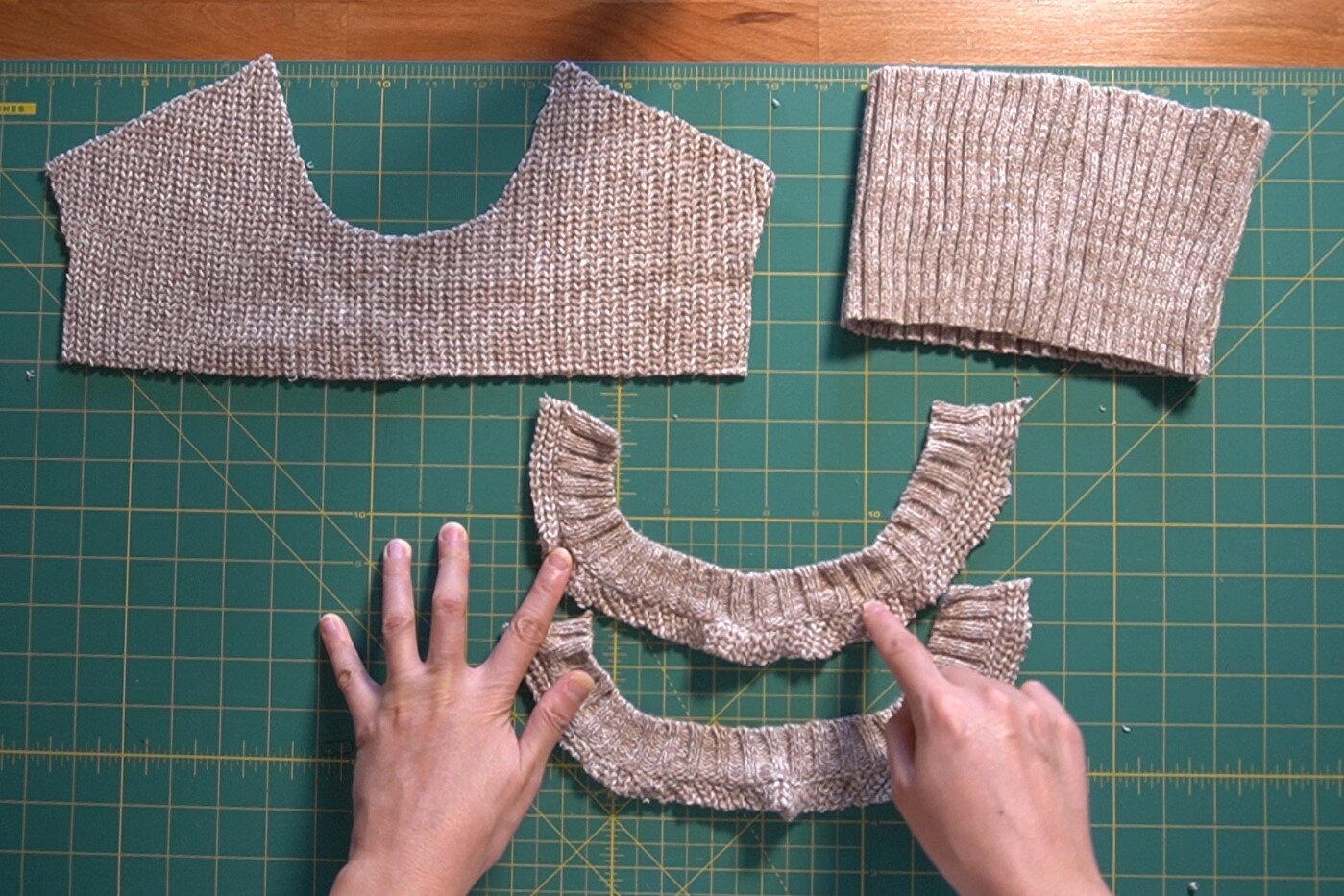

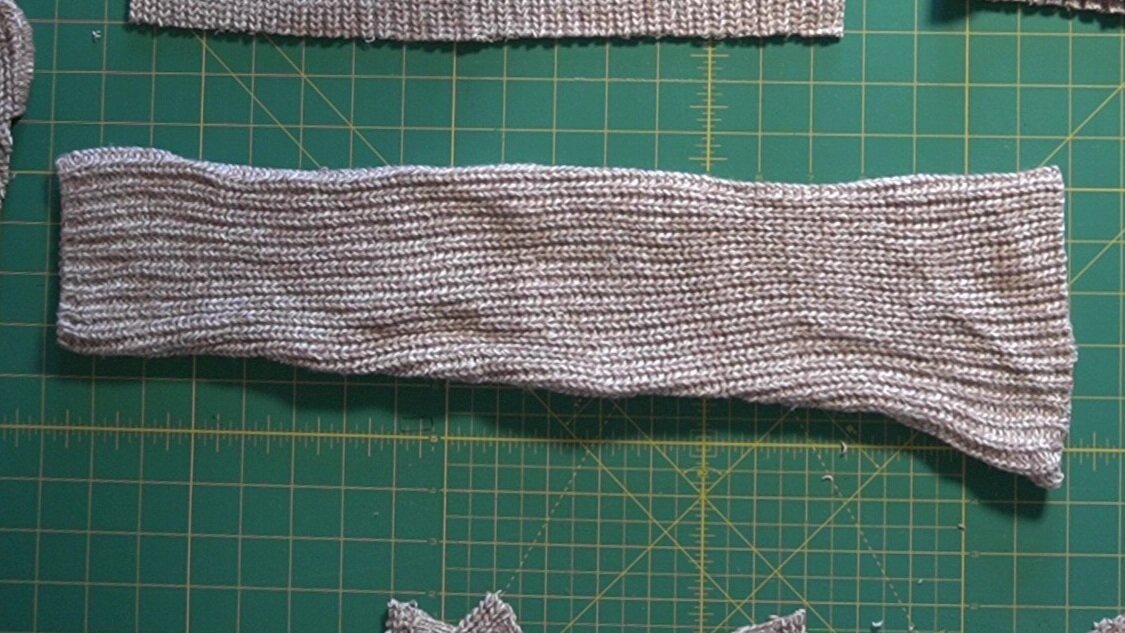
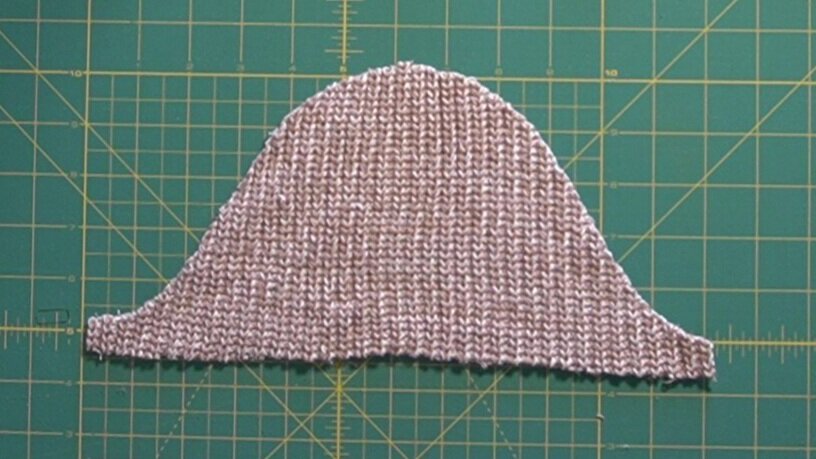
The first part of the project was pretty straightforward - I had to sew together the front and back of the tank top at the side and shoulder seams. For this project, I really wanted to use my regular sewing machine instead of my serger, just to prove that it is in fact possible to sew knits without a serger. I used my zigzag stitch with the stitch width set to 5 and the stitch length set to 1.5. (Tip: remember that the lines on the plate of our sewing machine indicate distance from the sewing machine needle when it is in the center position. The needle won’t be in the center position when you are using a zig zag stitch, so be sure to measure the distance from the needle when it is in the left position, and set your seam guide according to that distance.)
Once the shoulder and side seams were sewn, I trimmed the back neckline to blend in with the neckline in front. I also cut the armholes in a bit, to narrow the width of the shoulder strap to more closely approximate the look of the inspo garment and lower the bottom of the armhole a bit. The original pattern draft had a tight armhole because the bodice was supposed to connect to the sleeves, but that no longer made sense now that we were making two separate pieces. After trying the tank top on, I decided that the top was too constricting so I decided to lower the armholes to make the top more comfortable to wear.
The next step was to finish the neckline and armholes. My favorite way to finish the edges of knit fabrics is to sew clear elastic to the edge (taking care not to stretch the fabric), then turn the elastic over to the inside of the garment and stitch the edge in place. This gives me a clean finish every time and it also ensures that the seam will not stretch over time. (Check out the video below if you want to see what I’m talking about.) If you find that your edge is wavy or ruffled or not sitting smoothly, hover your iron over the edge and apply lots of steam - the steam will shrink the fabric and get your edge to lay flat again. Trust me, it really is magic - I frequently find that I have wavy edges when I first finish stitching the edge, but applying steam fixes the problem instantly.
With that, the tank top was done (note that I didn’t have to finish the bottom hem because I used the existing hem from the original garment - hooray for time savers!). It was now time to move on to the cropped cardigan/shrug.
This was a pretty straightforward sew, complicated only by the fact that I had to sew on new sleeve caps to the sleeves that I took from my original sweater dress. I used the ribbing that I had salvaged from my original sweater dress and used that for the neckline and the hem in the front. The top part of the sleeve is attached to the bodice, but the bottom of the armhole is not, so I finished the edge of that part of the armhole using clear elastic. I also finished the hem in the back with more clear elastic, to prevent the hem from stretching out. I might go back and add clear elastic to the front hem as well, if I see that the hem is stretching out after some wear.
For whatever reason, after trying the cropped cardigan/shrug on, I found that I needed to pinch out quite a lot of excess at the shoulder seam to get everything to lie flat. I also found that the armhole and sleeves were too wide and I ended up re-sewing the sleeves in with a wider seam allowance to bring the armhole in a bit on my shoulder. I’m not sure why I needed to do this, as I don’t think it’s an issue with the pattern - it might just be a quirk of my loose knit fabric, so take this with a grain of salt. I point it out only to note that after you have constructed the cropped cardigan and tried it on, you might find that you need to make some adjustments to make the cropped cardigan more fitted.
Overall, I’m thrilled that I was able to give my old sweater dress a new lease on life and transform it into this trendy cropped cardigan. The sweater set is really comfortable and much warmer than I would have thought, considering it’s a tank top and cropped shrug. I’ve been wearing it lots of different ways - on shoulder, off shoulder, with just the shrug paired with other tank tops. I could imagine pairing it with a loose wide-legged pant in a soft cozy fabric (that’s my next project - to make these wide-legged pants out of some old linen sheets I have laying around). Best of all, it’s a bargain AND it’s good for the environment: instead of throwing away the sweater dress and spending $750 on a new Rosie Assoulin sweater set, I re-used my (free) old sweater dress and only spent $7 on the pattern and maybe a dollar on clear elastic. Double win!
Here are some dress form pics:
I encourage you to refashion your old sweaters into a cropped cardigan set as well - it is really a pretty simple sew that doesn’t require any specialized equipment (no, you don’t need a serger - check out this guide to sewing knit fabrics with a regular sewing machine). Knits have a reputation of being rather tricky to sew, but I think that is hugely overblown, as chunky knits can actually hide a multitude of sewing mistakes and steam can really work magic on wavy seams. Here are a few tips to keep in mind if you do decide to make this yourself:
If you can’t squeeze all of the pattern pieces out of one sweater, just use two sweaters in complementary colors and make the tank top out of one sweater and the cropped cardigan/shrug/bolero out of the other.
If you don’t already own a good sweater to refashion and you’re shopping for one at a thrift store, look for the biggest size you can find, to give yourself more fabric to work with. Also look for a sweater dress with a chunky knit (either ribbing or cables) - the cropped cardigan really needs that chunky texture to get that slouchy, cozy effect.
When cutting the fabric, try to use as many features of the existing sweater as possible - salvage the ribbing, keep the cables and use the bottom hem and sleeves.
Don’t forget to cut out an extra back bodice piece for the cropped cardigan.
Don’t forget to trim the neckline and armholes of the tank top. This will make the tank top much more comfortable to wear.
You might need to take in the cropped cardigan to make it more fitted to your body. (I ended up pinching out quite a lot of excess at the shoulder seam and bringing the sleeve in a bit.)
Are you inspired to make your own cropped cardigan set? Let me know in the comments!
How to Make a Padded Shoulder T-Shirt
Over the summer, I saw countless iterations of the shoulder pad t-shirt all over fashion websites and social media. The simple addition of shoulder pads into the basic white t-shirt elevated the look, and it could be styled with joggers (for a casual athleisure look) or cinched pants (for a more polished look).
Photo credits: Focus VIP; The Frankie Shop; Chloe Lewis/Instagram
I loved this look so much I thought I would make a video tutorial showing how to add shoulder pads to a basic white t-shirt. It’s super easy and can be done in less than 30 minutes. All you’ll need is a plain short-sleeved t-shirt and some shoulder pads, which you can get from your local craft store or on Amazon. Check out the video below!
Did you try adding shoulder pads to your t-shirt? Let me know in the comments - I’d love to see your finished projects!







